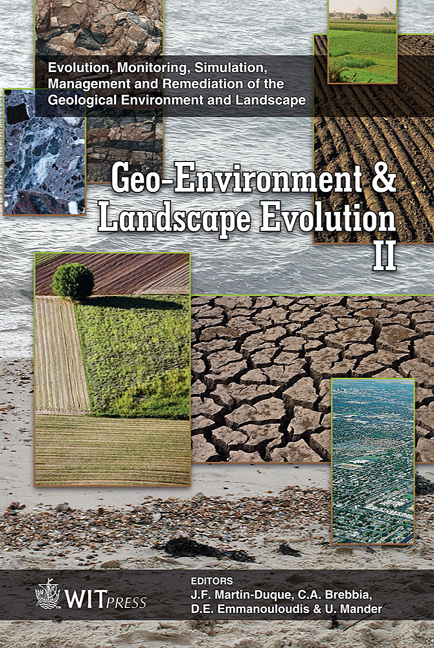Influence Of Ground Water Extraction In The Seismic Hazard Of Mexico City
Price
Free (open access)
Transaction
Volume
89
Pages
10
Published
2006
Size
820 kb
Paper DOI
10.2495/GEO060451
Copyright
WIT Press
Author(s)
J. Avilés, L. E. Pérez-Rocha & H. R. Aguilar
Abstract
The influence of ground water extraction in the seismic hazard of Mexico City is examined. Available information on settlements of the land surface is used to evaluate the subsidence effects on the predominant ground period. Microzoning maps, as a function of this relevant site parameter, are constructed for the present and future geotechnical conditions. Based on these maps, site-specific design spectra throughout the whole city are determined by applying seismic code provisions. It is found that the regional subsidence will generally be beneficial for structures with fundamental period longer that the current period of the site, but detrimental if the structure period is shorter than the site period. Keywords: design spectra, ground water extraction, microzoning map, regional subsidence, seismic hazard. 1 Introduction Extensive ground-water exploitation has been identified as the main cause of land subsidence in Mexico City. The phenomenon has caused large settlements in the past, up to 10 m at some areas of the city. Subsidence of the city was studied for the first time by Carrillo [1], showing a clear dependence with the amount and rate of water extraction from artesian wells. Since then, many efforts have been made to understand the phenomenon and mitigate its consequences. A review of these efforts can be found in Ovando-Shelley et al. [2]. These authors have studied the consolidation process in the central part of the city using the well-known Terzaghi’s consolidation theory. They showed that exploitation of the aquifers under the lacustrine clays is reflected not only on the gradual
Keywords
design spectra, ground water extraction, microzoning map, regional subsidence, seismic hazard.





